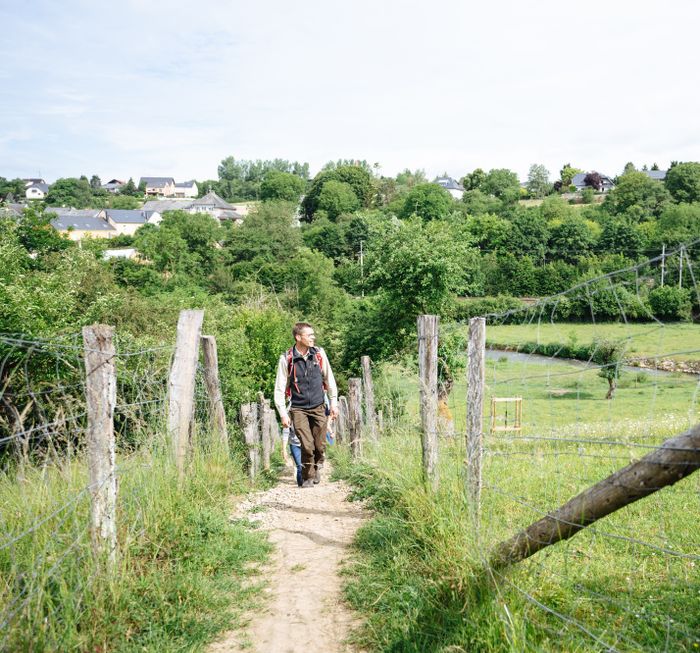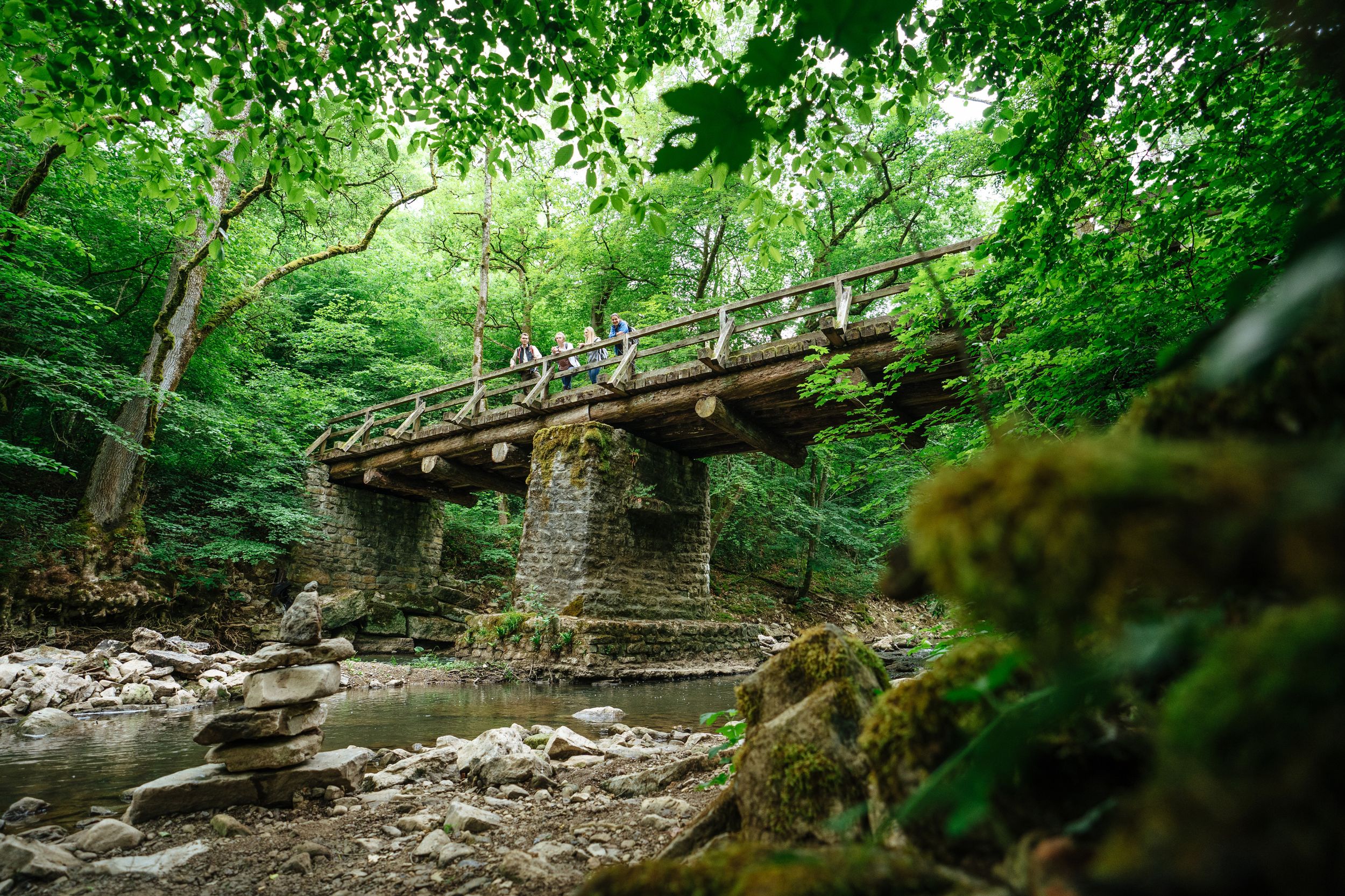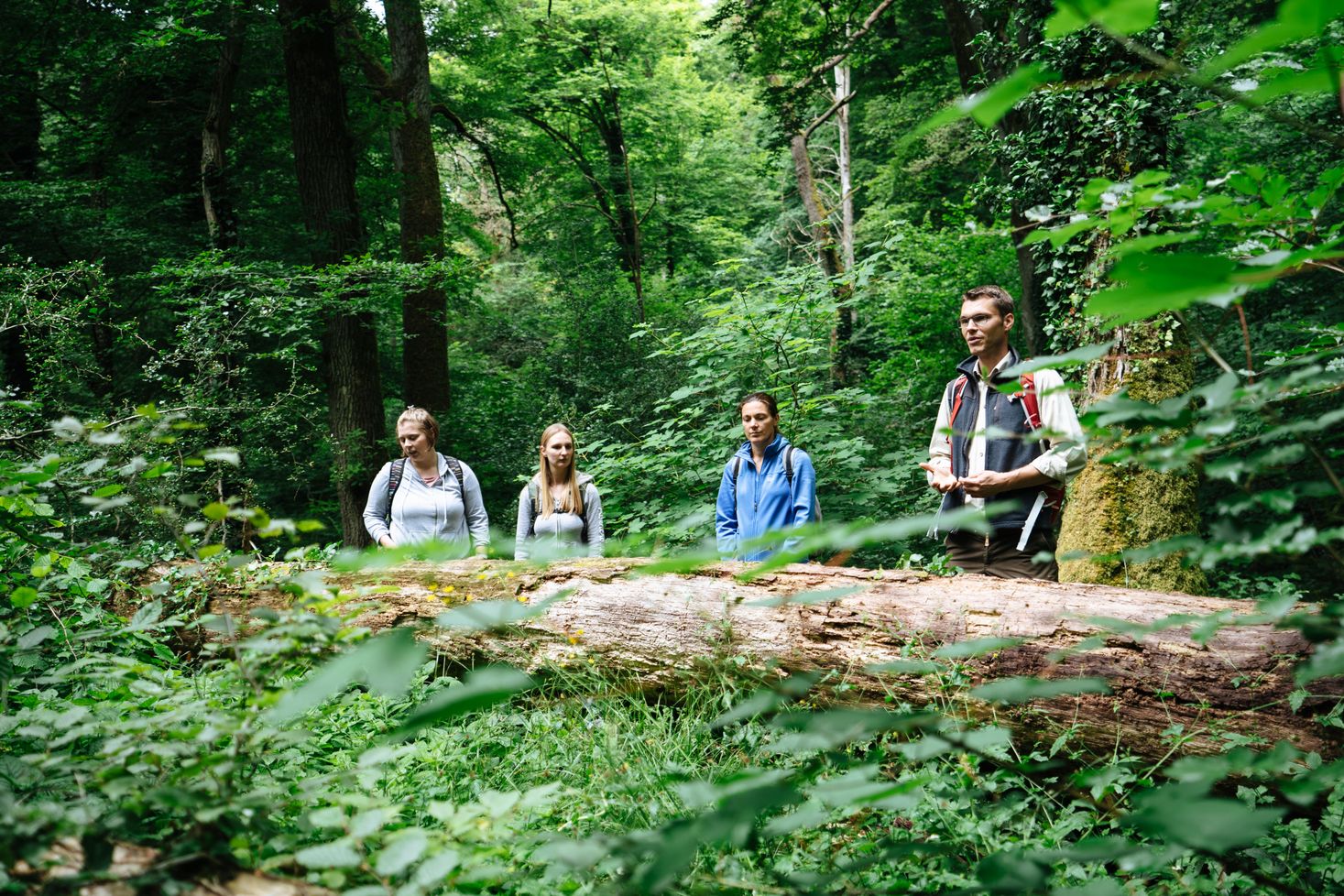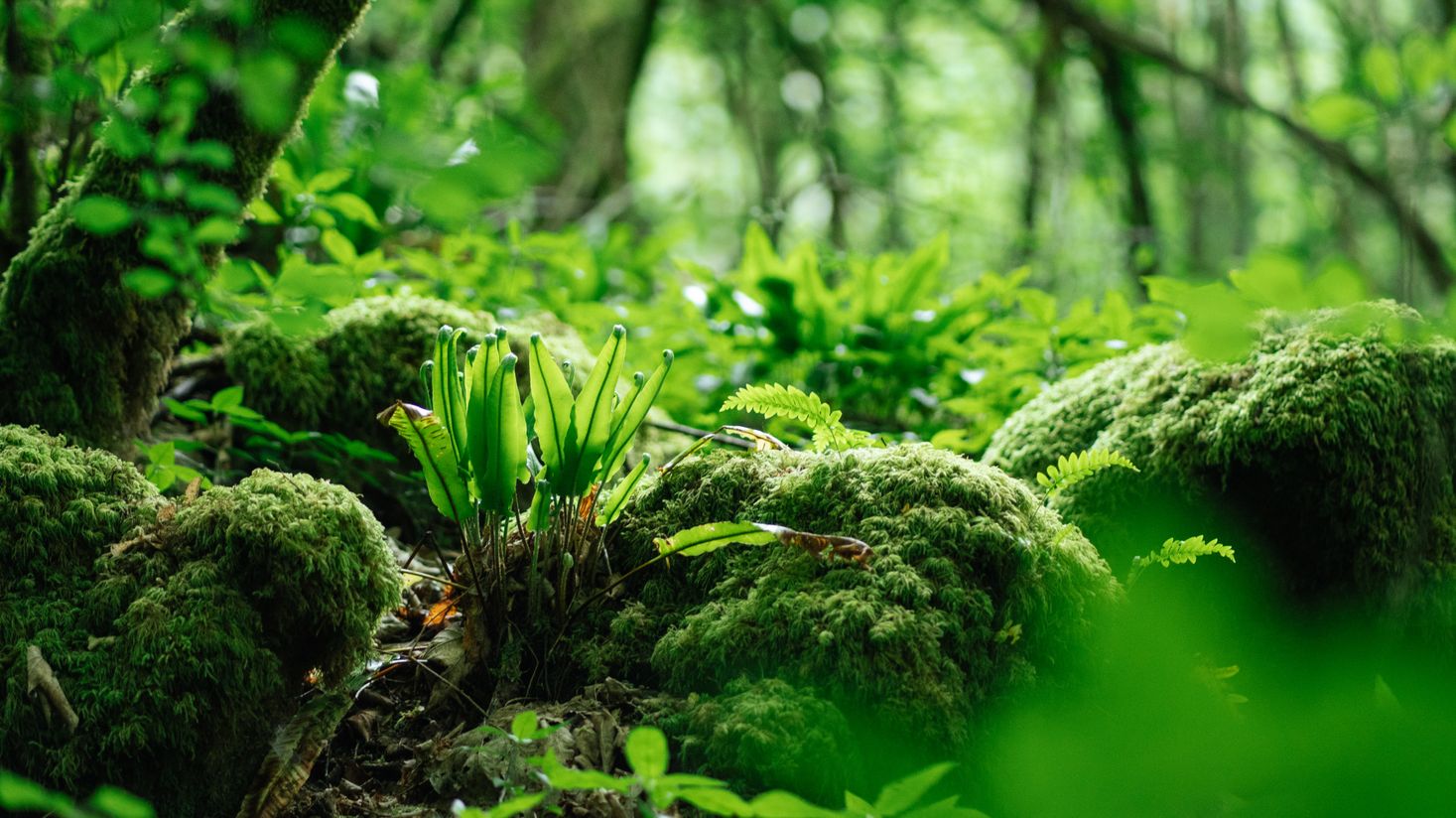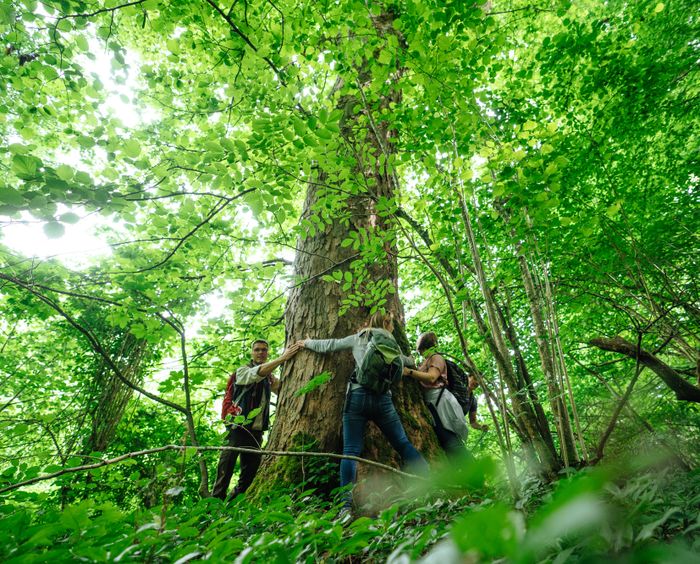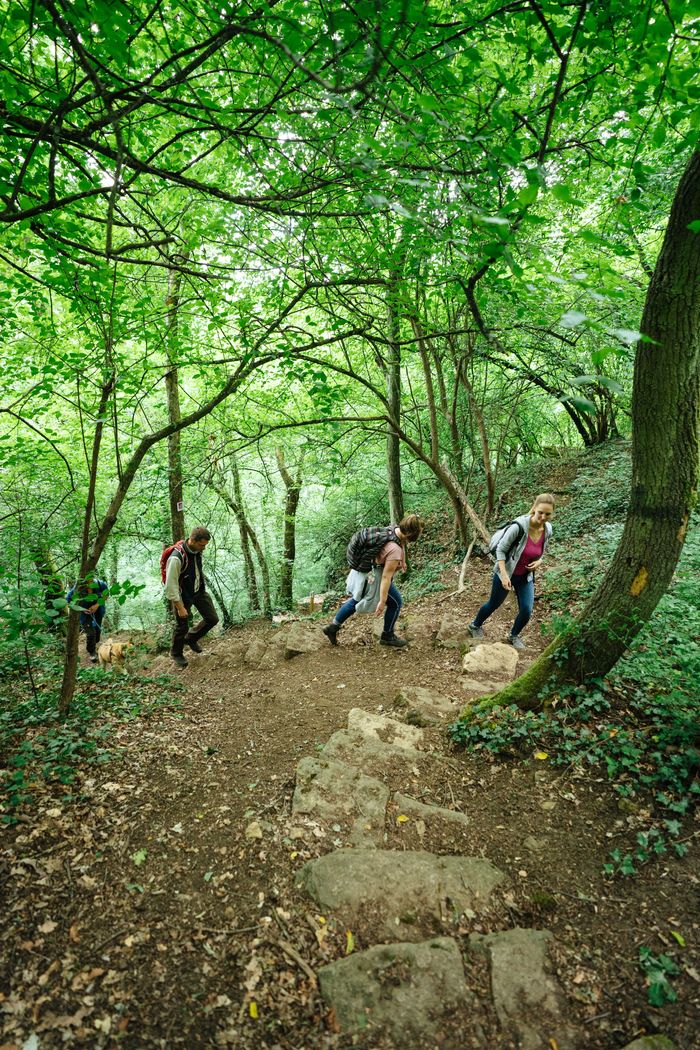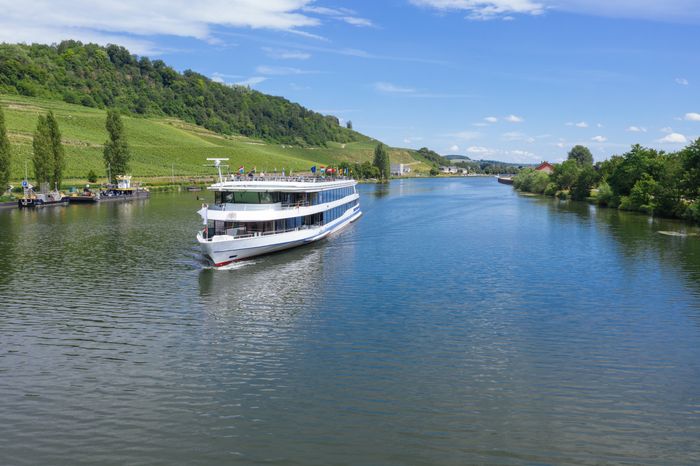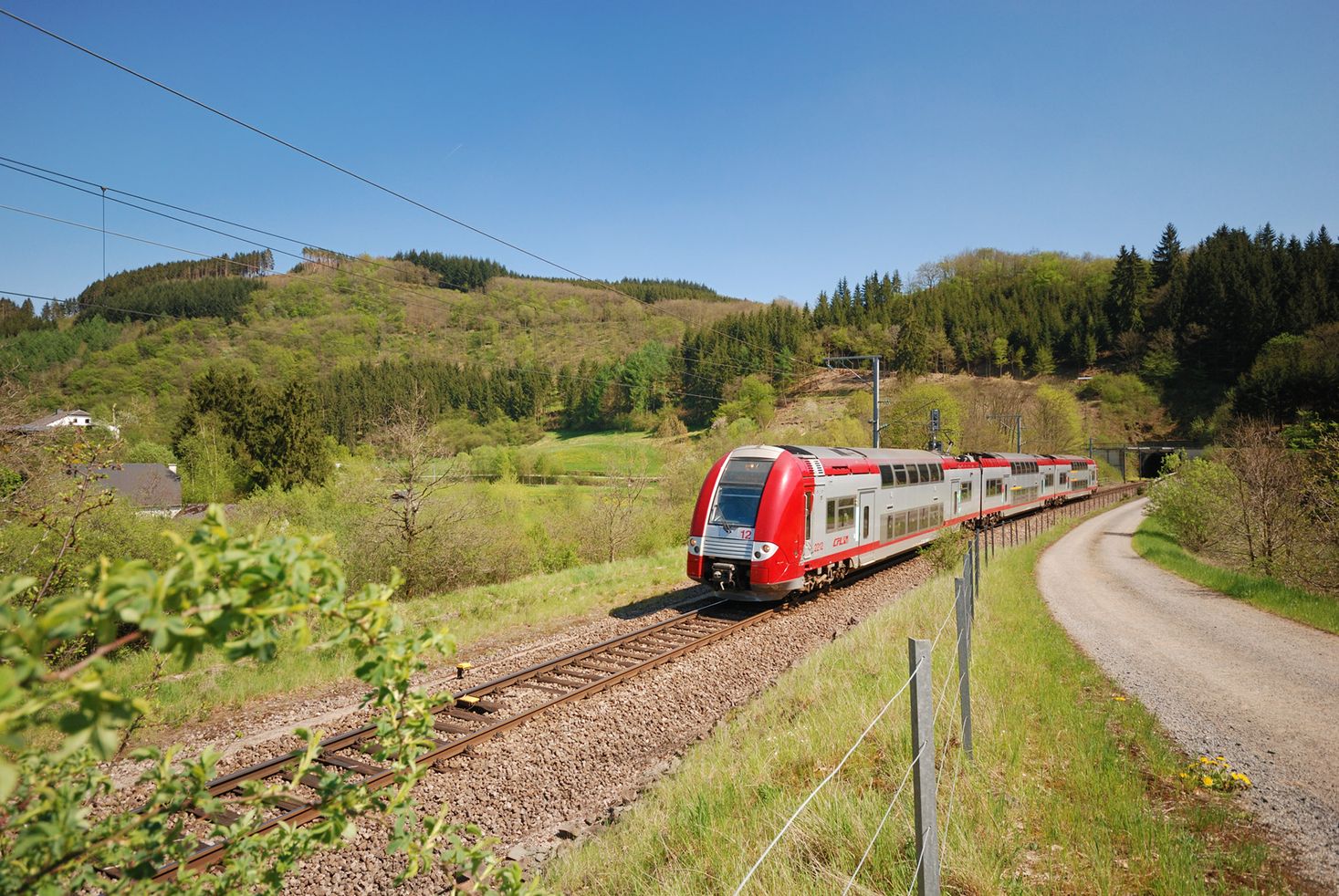Through the wild ravine forest
Ancient trees, rare plants and gently flowing streams — Luxembourg’s natural beauty shows off its wild side on a walk in the Manternacher Fiels. This 11.5 km CFL hiking trail leads through an unspoilt landscape. At the end, all you have to do is board the train to get back to where you started.
The steep hillside rises up amid an ocean of light green ferns and dark green, moss-coated rocks. There are lime and maple trees all around, with overgrown fallen trunks here and there. A narrow path winds its way through the forest. There is humidity in the air. It is pleasantly cool, despite the summer tem-peratures. The River Syre ripples quietly through the valley below. Welcome to the Manternacher Fiels, a richly varied nature reserve in eastern Luxembourg.
